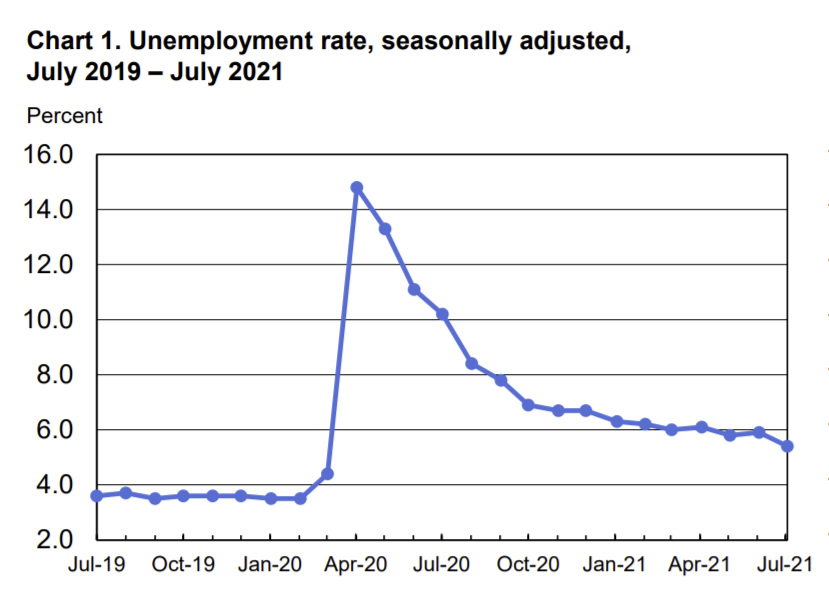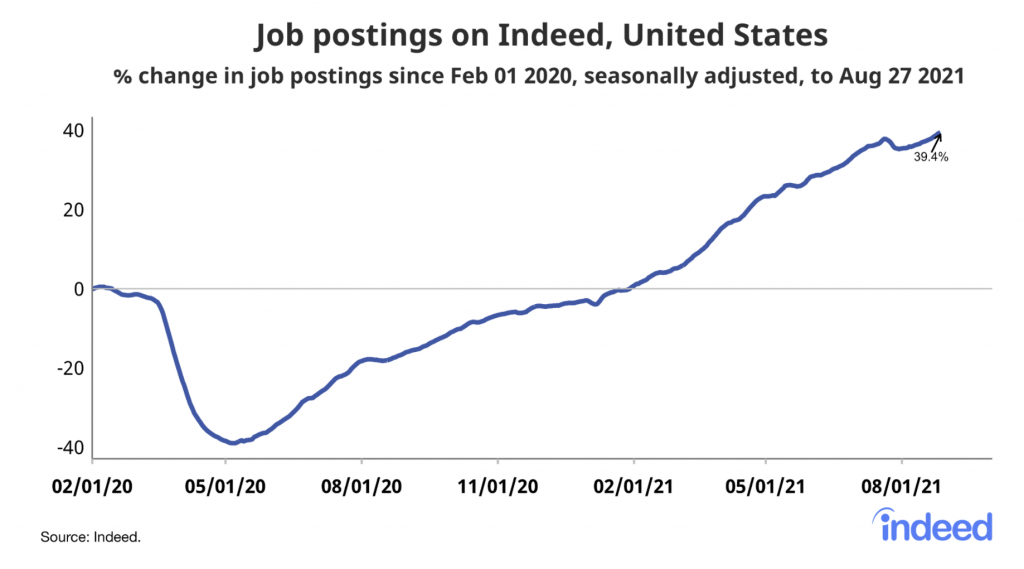
Hiring Data: September Trends
For many years one of my main roles with Kelly was to prepare the America’s region finance and accounting staffing teams monthly hiring outlook and hiring data. I don’t know how many PowerPoint decks I compiled, but we lived and died by that information.
As you are probably aware, across news and media outlets, the Bureau of Labor Statistics numbers, different unemployment percentages, and job categories are tossed about with little background. Consequently, it’s hard to know what’s important. I look at the numbers in a particular way that stems from my years of managing a recruiting team and looking for job opportunities. Essentially, where are sales opportunities and open jobs? Likewise in your job search, it is how you look for an edge with your applications.
Going forward, I am going to prepare a monthly update on the data and numbers I think are key as it relates to a hiring outlook and forecast. I like to go straight to the source with the BLS monthly reports. I review the information Indeed publishes including their research, blogs, and surveys. LinkedIn has a great Talent Solutions Blog and employer section that is wonderful for job seeks to review the hiring perspective and trends they may encounter throughout the hiring process. The Official LinkedIn Blog has resources as well.
July BLS Overview
On August 6, 2021, the BLS released its hiring data for July. The overall unemployment rate was 5.4% with 8.7M people currently looking for work. I think the bigger surprise that came out was that there are only 8.7M people seeking 10M posted jobs. We are sitting at a 61.7% employment participation rate. That means that 38.3% of eligible workers are sitting out for a variety of reasons.
What does that mean for employment? When you look at a 5.4% unemployment rate, most want to go back to the preCOVID unemployment numbers and assume that 5.4% is bad. PreCOVID we were at 3.4%, and there is a case to be made that there is such a thing as an unemployment rate that is too low. The Federal Reserve has stated they feel the best natural unemployment rate is somewhere between 3.5% and 4.5%.This article from Investopedia does a great job of explaining the economic impacts of low unemployment, but what about hiring?
As a recruiter, I have worked in an environment with very low unemployment, but it never got as low as 3.4%. At the height of my recruiting career, the lowest I saw was 3.9%. Honestly, it was excruciating to find talent. It is difficult for teams to have good morale if they don’t have enough resources. Productivity falls. Employers tighten up on vacations, hours for everyone go up. The work doesn’t get done. Employers panic and it creates a negative cycle of job churn and burnout.
In short, here we sit at 5.4%. Employers are screaming about not having enough workers, the data shows there are not enough job seekers for the open jobs, productivity and morale are suffering across industries. Now, I am not about to get into monetary or stimulus policy. That’s not my wheelhouse. I just ask you to consider that even sitting at 5.4% unemployment, we don’t have enough people going around.
The next question is, well, Mr. or Ms. Employer, shouldn’t you be happy to hire whomever you can get? Why is it still so hard for me to get a job?

Unemployment Trends Pre to Continued COVID
Going Deeper With Hiring Data
One of the data sources I often consider when working with my clients in terms of how long it will take for them to find a job is the BLS numbers for unemployment by educational level. This does not mean that degreed or non-degreed is better. Many people have degrees from an entirely different major than the one they are employed in. Rather, looking at this slice of data confirms how much competition there may be for a particular role, and then one can look at the different sectors.
| Unemployment Rate, No High School Diploma | 9.5% |
| Unemployment Rate, High School Graduates, No College | 6.3% |
| Unemployment Rate, Some College or Associates Degree | 5.0% |
| Unemployment Rate, Bachelor’s Degree, and Higher | 3.1% |
What I am seeing with my clients is that they tend to be in both some college or Bachelor’s and higher categories and once they perfect their search and targets, they are typically finding work in 10 – 16 weeks. Interestingly, this category has been stable with time to hire throughout the pandemic. What I am seeing is that my clients who want remote work have fierce competition even and especially in the Bachelor’s degree and higher category.
Bright Spot Data By Industry
I am not going into every industry. You can see the raw data here from the BLS. There were, however, a few areas that caught my eye.
Leisure and Hospitality is the segment that has been hardest hit during the pandemic. Restaurants, bars, hotels… we all have stories. In July, the Leisure and Hospitality segment was up by 380K jobs. Although the sector as a whole is still down 10.3% from February 2020. The brightest spot was Food Service and Drinking Establishments, which accounted for two-thirds of the 380K jobs coming back online.
Professional and Business Services are actually 121K jobs over the February 2020 number. The big growth section here is in Professional and Technical Services which includes accounting, bookkeeping, and technical consulting services.
What To Focus On For September?
In a survey released by Indeed back in July, it showedcandidates were not looking for a job “just then,” but were targeting the next three months. However, September is a line of demarcation. If you want a new position by the end of the year, you should start now. Generally, once November and December hit, job posting tends to dry up, hiring managers are thinking about year-end, everyone wants the calendar to turn over.
Historically, the hiring outlook for September and October is strong. November has a little traction, and December dies off. Your personal hiring outlook should be focused on preparation for your job search. What does your résumé look like? Are you prepared to interview virtually? What are your goals through the end of the year?

Indeed Job Posting Tracker
The graph to the right is a snapshot of the job postings on Indeed. As of August 27th, there are 39.4% more job openings than there were on February 1, 2020, which marked the start of the pandemic. You can go to the Indeed Job Posting Tracker and select your state and metro area to get a feel for the posting activity in your market. Based on the number of postings, right now is a fantastic time to be looking for a new role.
Next Steps
If you need support in any capacity for your search, please reach out. KDB Coaching works with clients at all career levels to craft a personalized job search strategy just for you.
